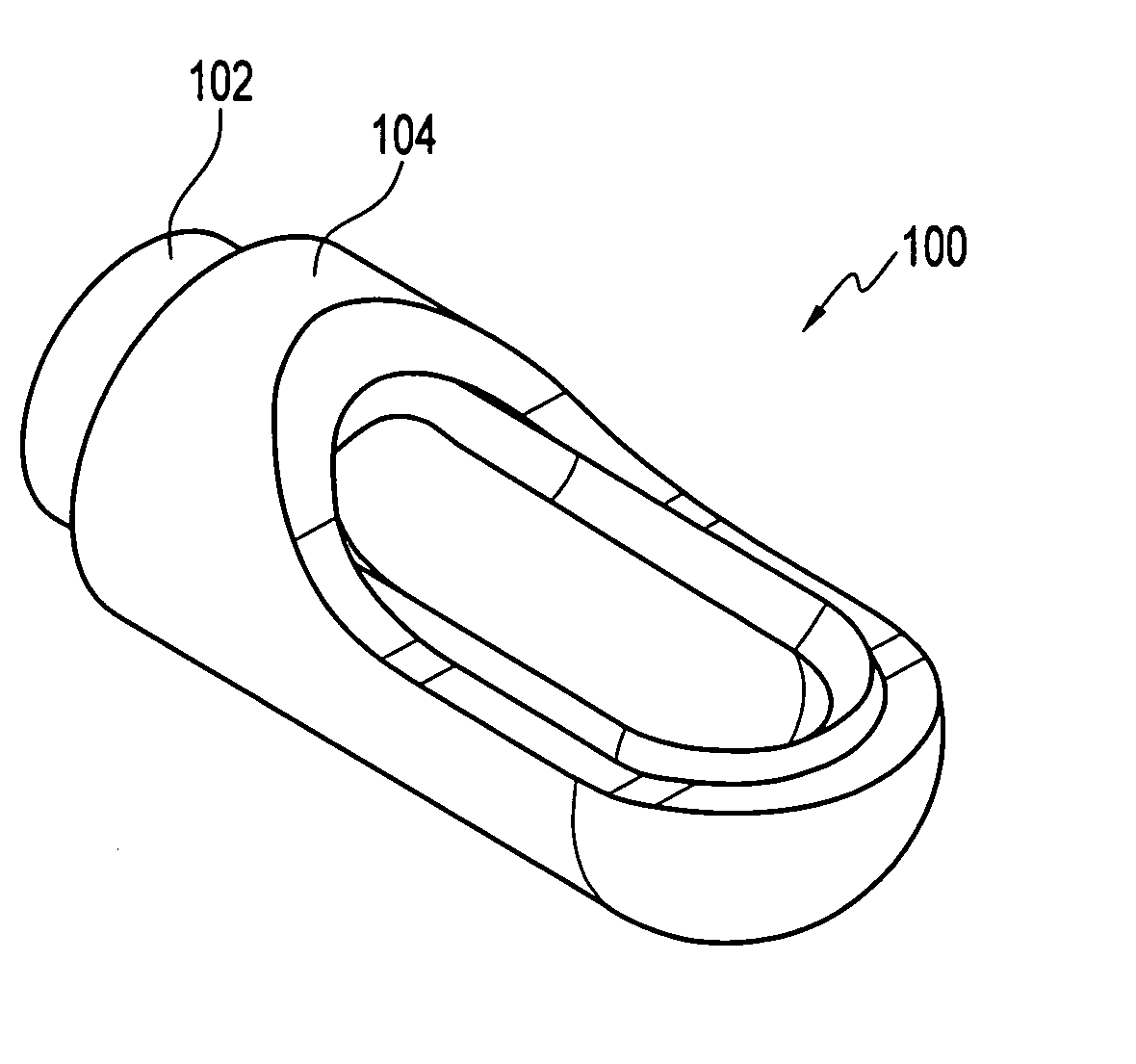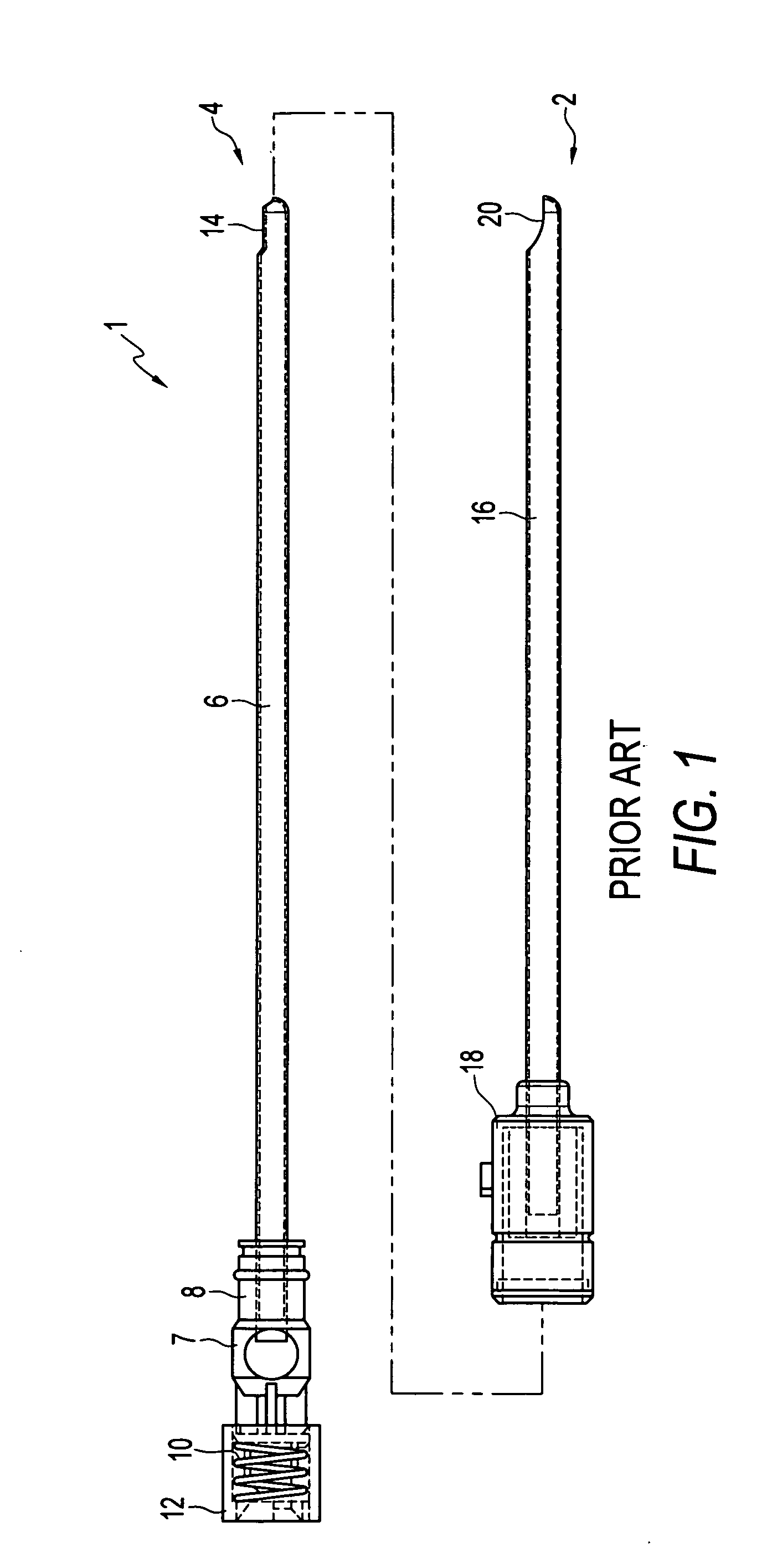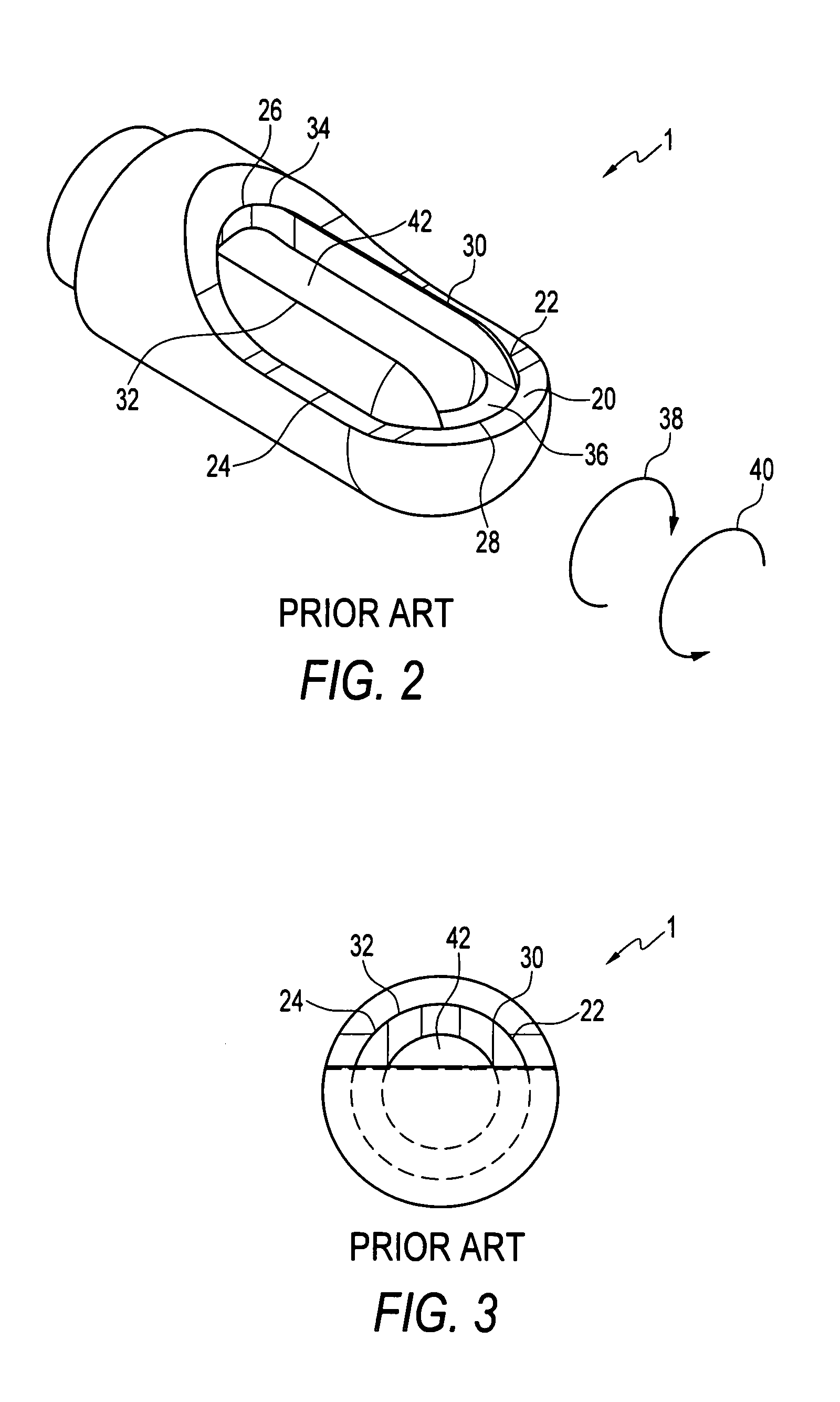Arthroscopic shaver and method of manufacturing same
a shaver blade and blade technology, applied in the field of shaver blades, can solve the problems of inability to grind the inner cutting edge, inconvenient tearing, inefficient geometry for cutting tissue, etc., and achieve the effect of improving efficiency
- Summary
- Abstract
- Description
- Claims
- Application Information
AI Technical Summary
Benefits of technology
Problems solved by technology
Method used
Image
Examples
Embodiment Construction
[0079]FIGS. 8 and 9 depict the distal portion of a shaver 100 formed in accordance with the principles of the present invention and having an inner assembly 102 with an inner cutting window, and outer assembly 104 with an outer cutting window. Shaver 100 is operated in a manner identical to that of prior art shaver 1, that is, in oscillate mode, tissue is trapped between opposing inner and outer lateral cutting edges as they approach, first during rotation of the inner assembly in a first direction, and again when the rotation of the inner is reversed. When cutting bone, shaver 100 is used with a constant forward or reverse rotation.
[0080] Referring to FIGS. 10-13, inner cutting window 110 has a first lateral cutting edge 112 and a second lateral cutting edge 114 joined by a curvilinear proximal edge 116 and a curvilinear distal edge 118. As seen in FIG. 11 (showing a side elevational sectional view in direction B-B (FIG. 10)) and in FIG. 12 (showing an axial sectional view in dire...
PUM
| Property | Measurement | Unit |
|---|---|---|
| included angle | aaaaa | aaaaa |
| included angle | aaaaa | aaaaa |
| included angle | aaaaa | aaaaa |
Abstract
Description
Claims
Application Information
 Login to View More
Login to View More - R&D
- Intellectual Property
- Life Sciences
- Materials
- Tech Scout
- Unparalleled Data Quality
- Higher Quality Content
- 60% Fewer Hallucinations
Browse by: Latest US Patents, China's latest patents, Technical Efficacy Thesaurus, Application Domain, Technology Topic, Popular Technical Reports.
© 2025 PatSnap. All rights reserved.Legal|Privacy policy|Modern Slavery Act Transparency Statement|Sitemap|About US| Contact US: help@patsnap.com



